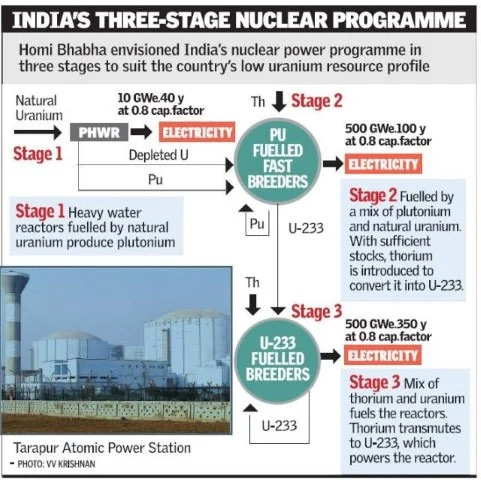India’s Three-Stage Nuclear Programme
Published on 21 Mar 2025
• The indigenous Prototype Fast Breeder Reactor (PFBR) at the Madras Atomic Power Station in Kalpakkam, Tamil Nadu, achieved a milestone by core-loading, marking the beginning of stage II of India’s three-stage nuclear power program.
• Initiated by Dr. Homi J. Bhabha and Jawahar Lal Nehru in 1954, this program emphasises self-reliance and a closed fuel cycle, where spent fuel from one stage is reprocessed to fuel the next.
• The stages include Pressurised Heavy Water Reactors (PHWR) fueled by natural Uranium, Fast Breeder Reactors (FBR) fueled by a mix of Uranium and Plutonium from reprocessed spent fuel, and Thorium-based systems in the final stage.
• FBRs, also known as Breeders, produce more fuel than they consume by transmuting Uranium into Plutonium.
• In the third stage, Plutonium combined with Thorium in reactors produces energy and Uranium.
• Core loading is the process of loading nuclear fuel assemblies into the core of a nuclear reactor.
Prototype Fast Breeder Reactor (PFBR)
• Pine Needles-based Fuel-Making Technology PFBR has been fully designed and constructed ndigenously by Bharatiya Nabhikiya Vidyut Nigam Limited (BHAVINI) with significant contribution from more than 200 Indian industries including MSMEs.
•Once commissioned, India will only be the second country after Russia to have a commercial operating Fast Breeder Reactor.
